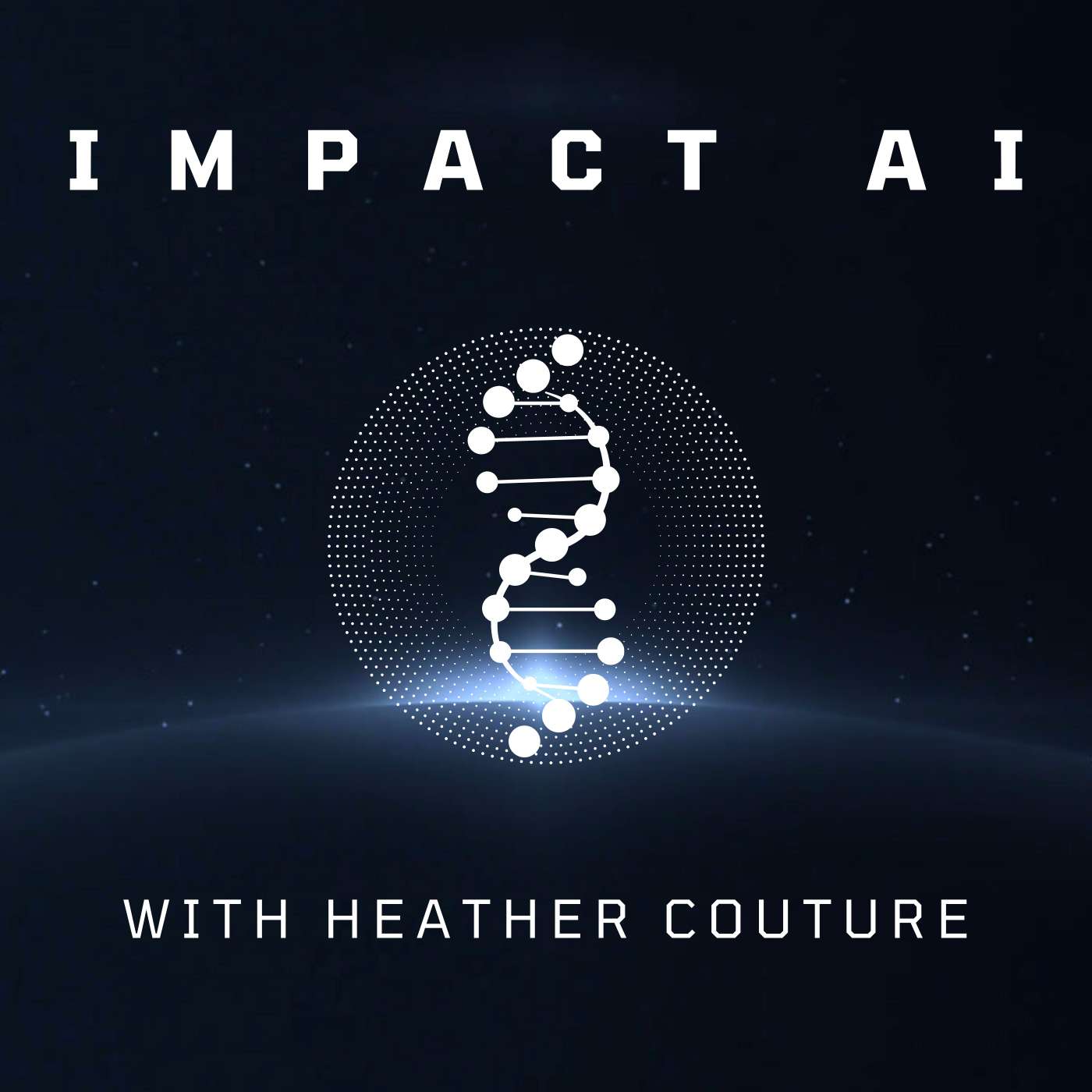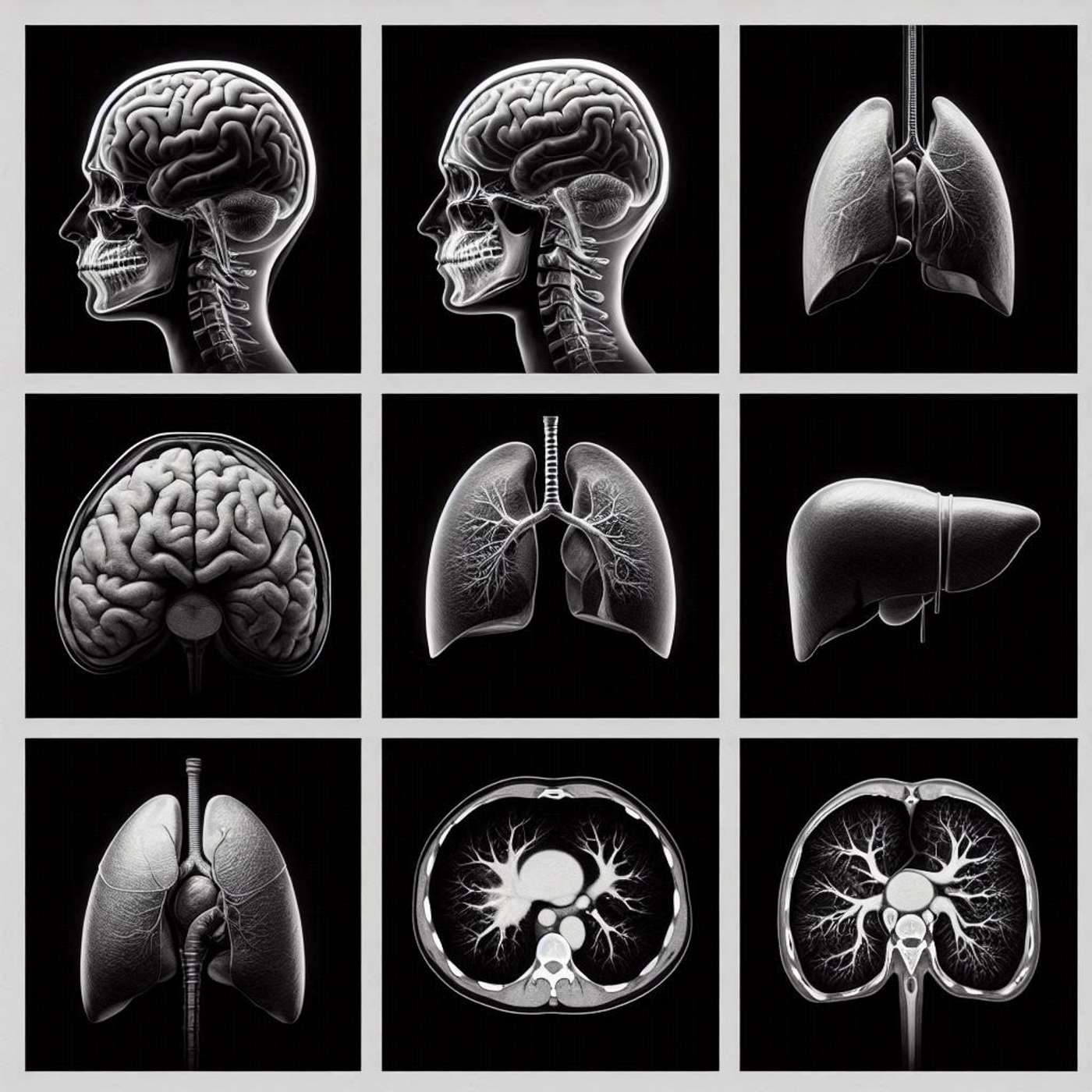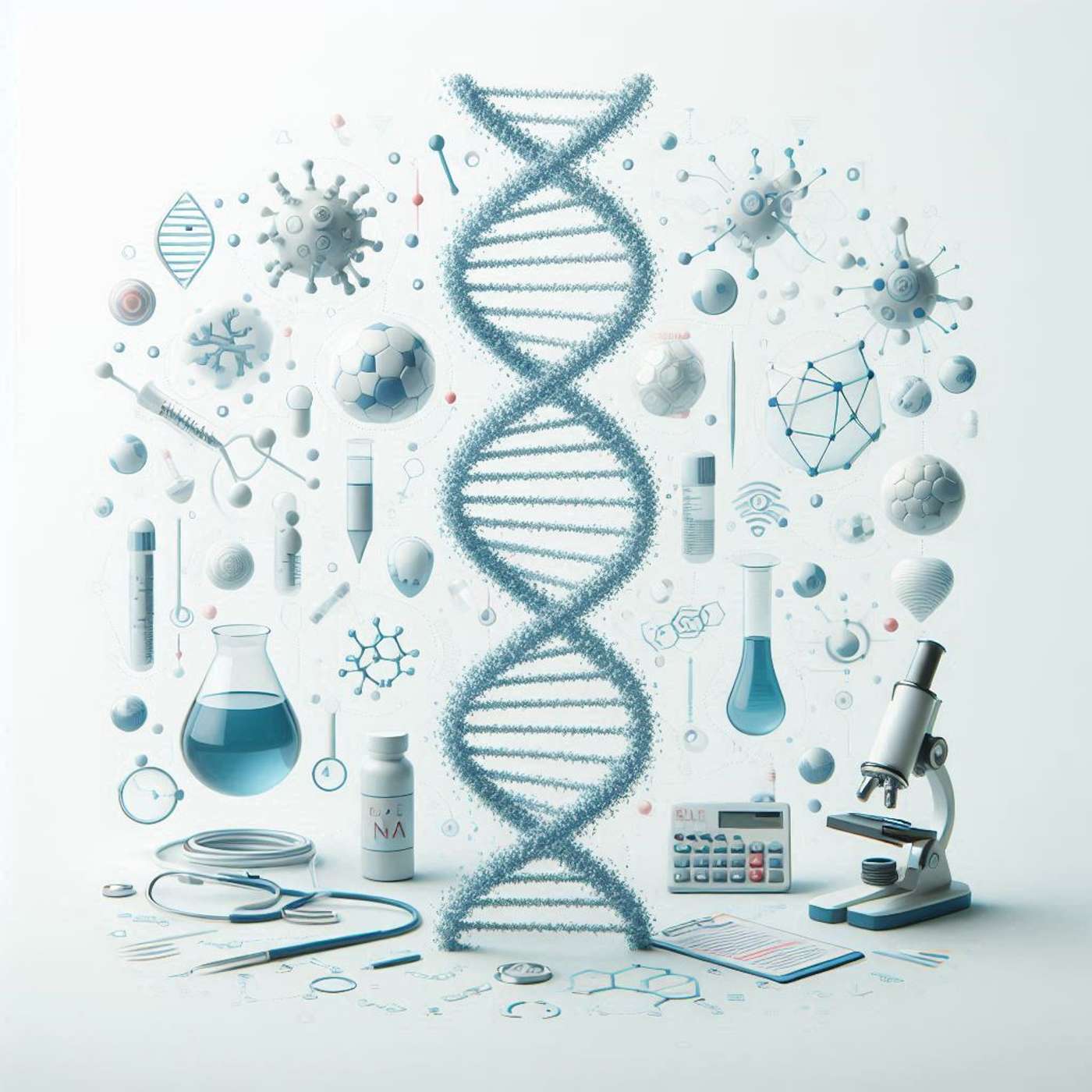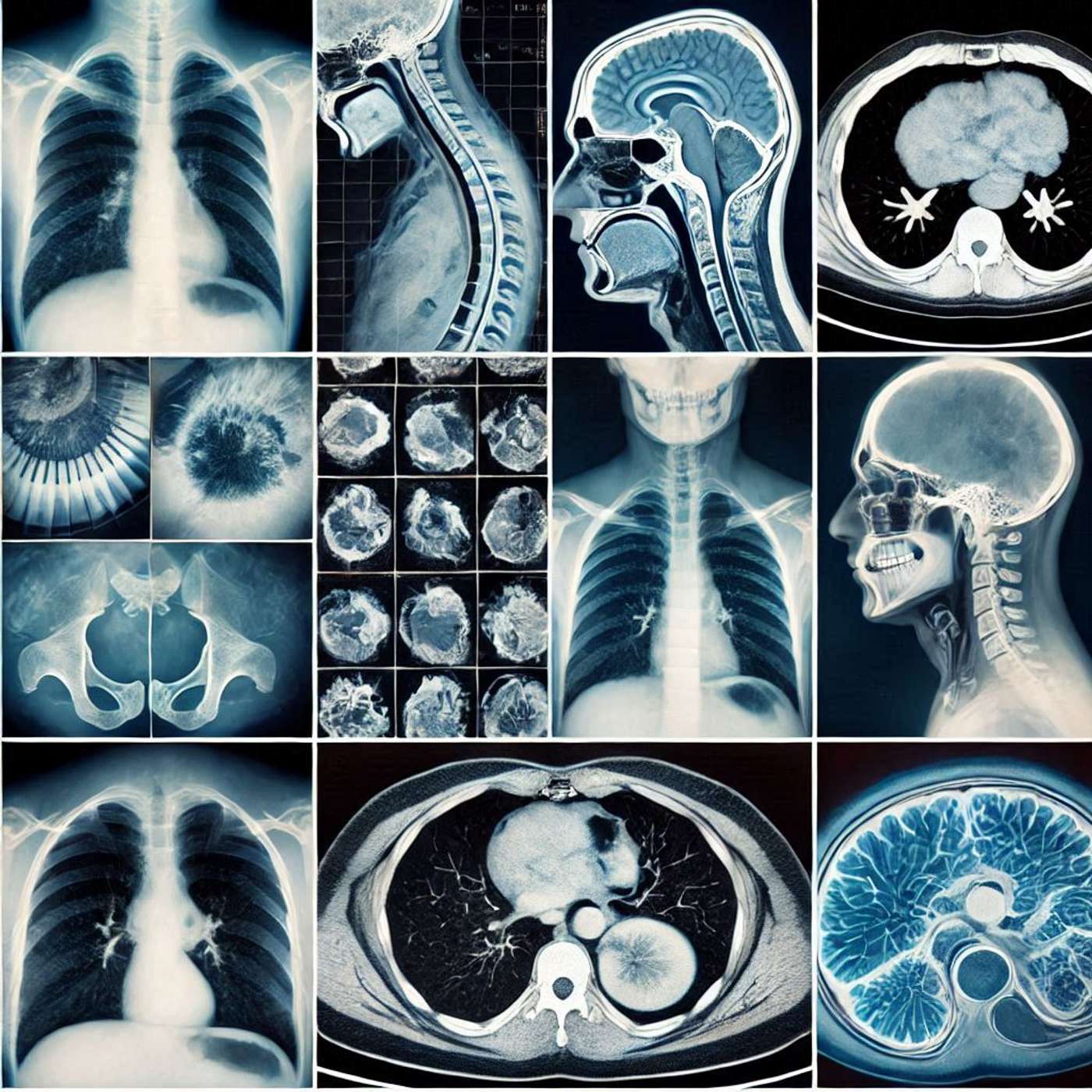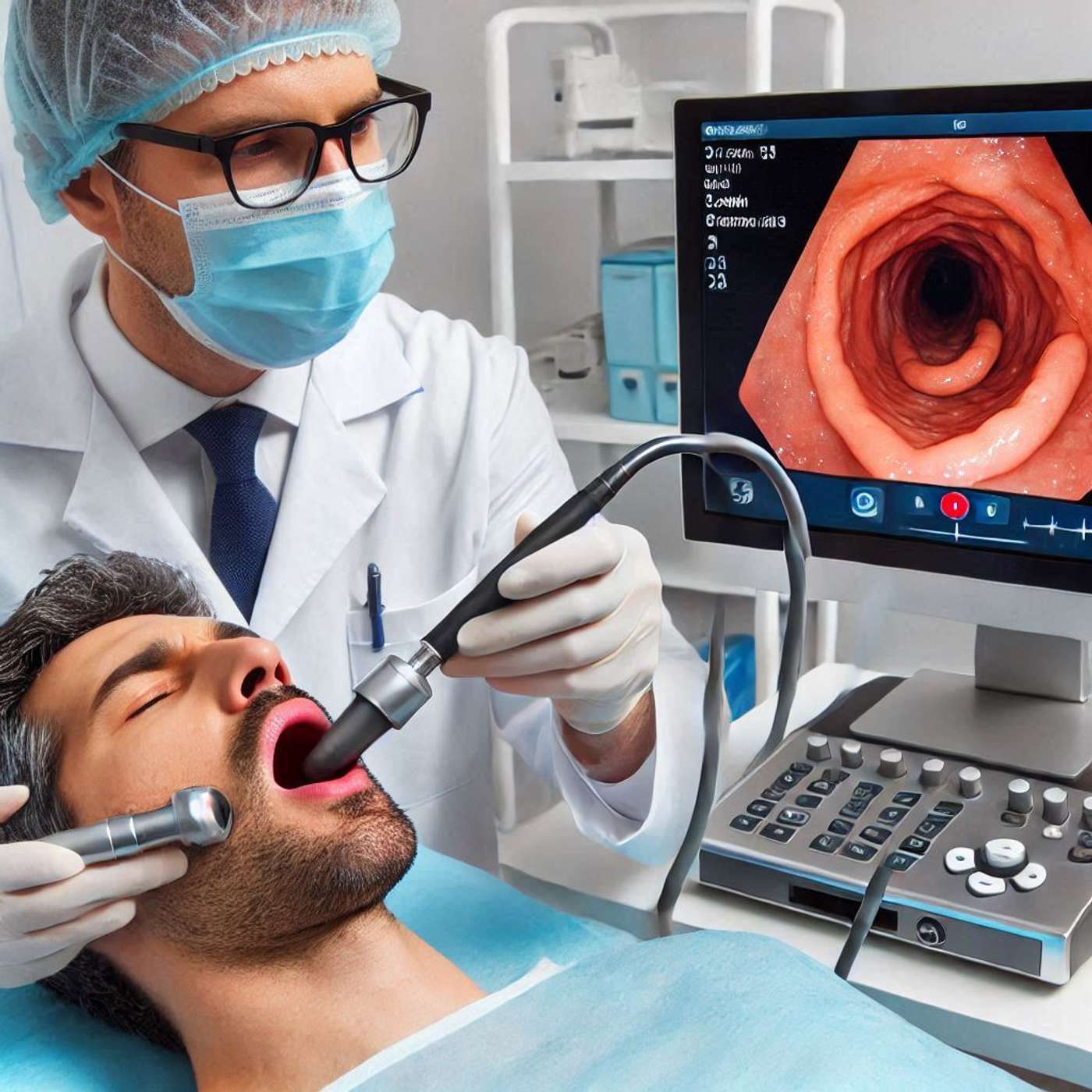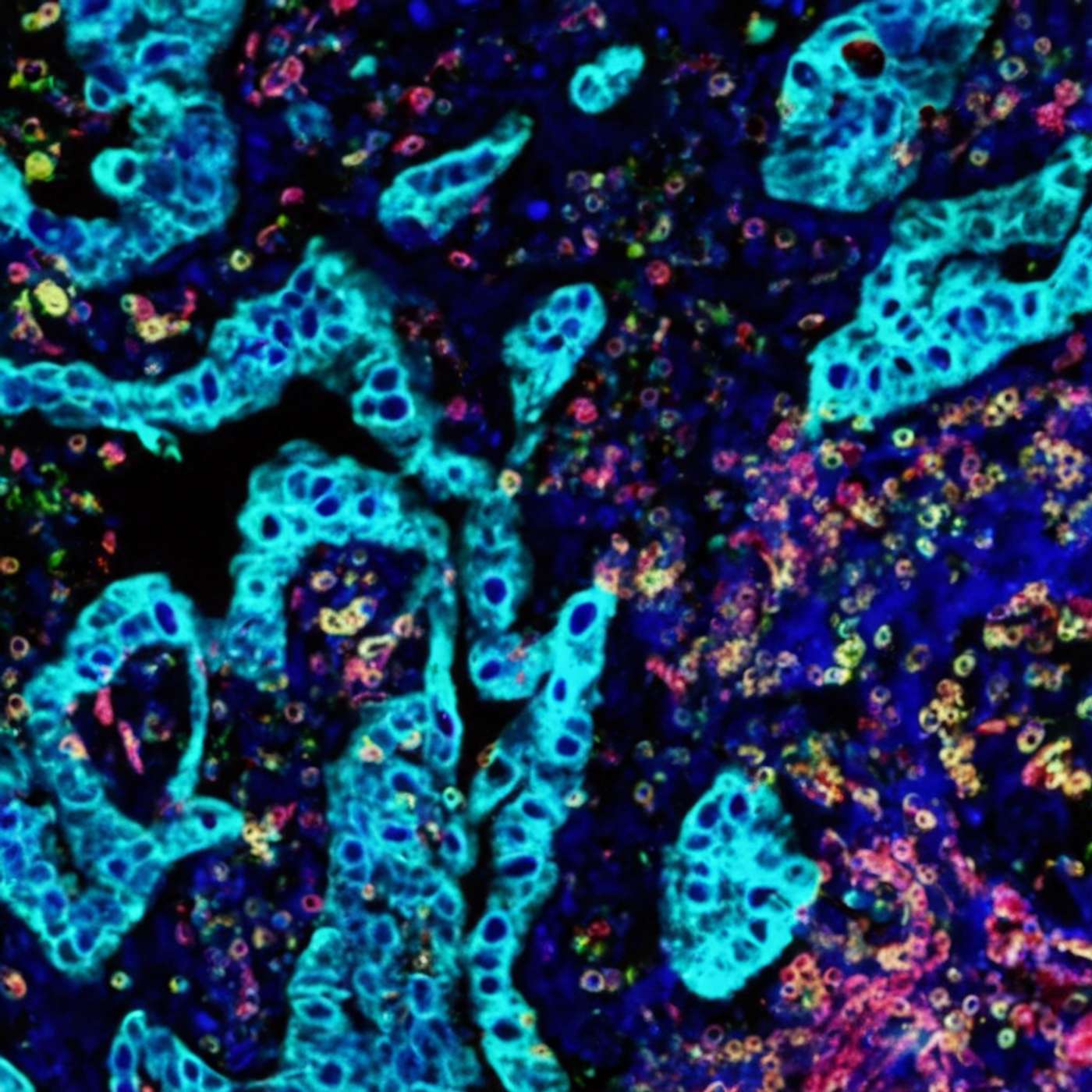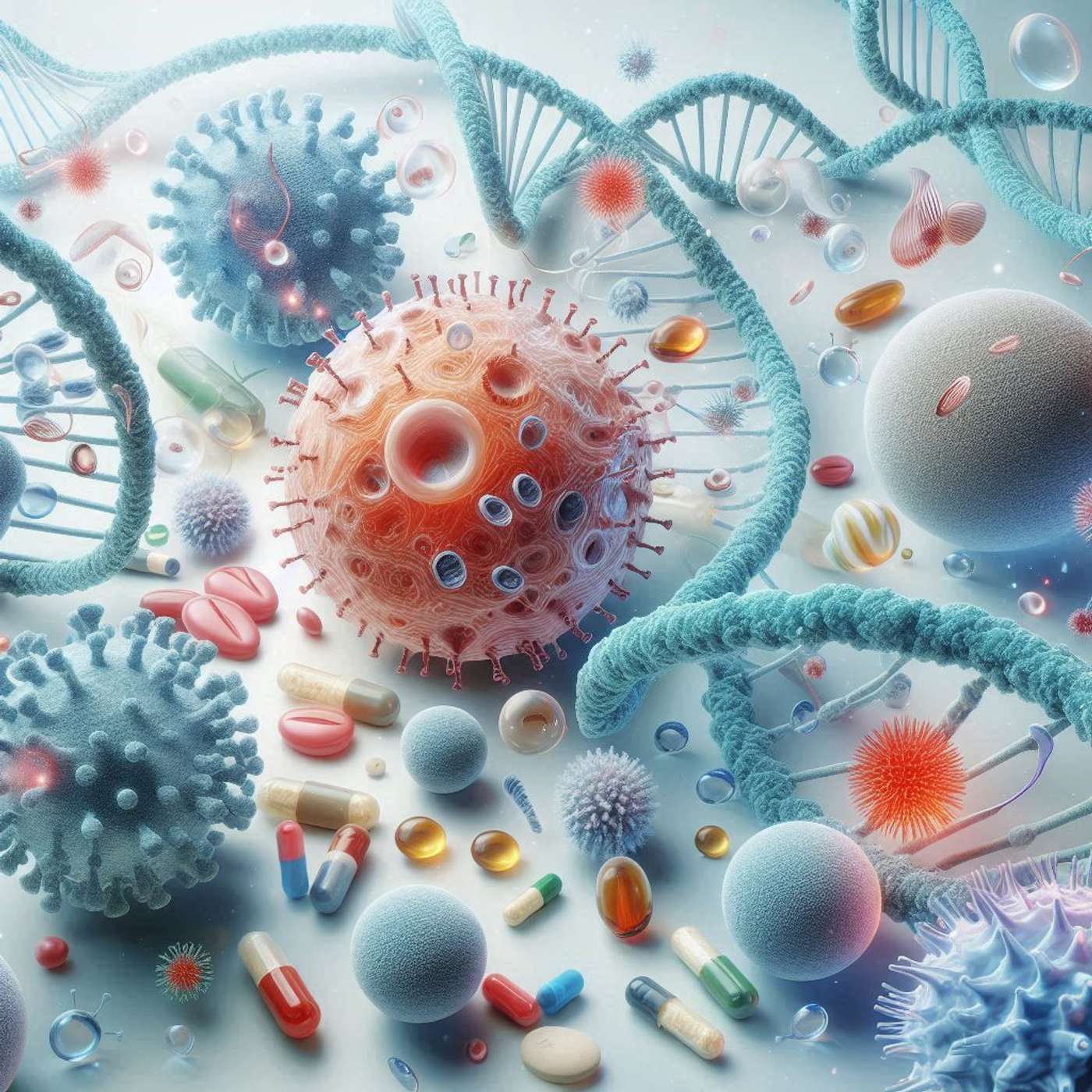Discover Impact AI
Impact AI

Impact AI
Author: Heather D. Couture
Subscribed: 28Played: 387Subscribe
Share
© 2023 Pixel Scientia Labs, LLC
Description
Learn how to build a mission-driven machine learning company from the innovators and entrepreneurs who are leading the way. A weekly show about the intersection of ML and business – particularly startups. We discuss the challenges and best practices for working with data, mitigating bias, dealing with regulatory processes, collaborating across disciplines, recruiting and onboarding, maximizing impact, and more.
127 Episodes
Reverse
I will be taking a brief hiatus for the next three months. I’m going to be using this time to step back, reflect, and rework the format of the show to bring you even more valuable insights and engaging conversations. I’m looking forward to returning in the fall with fresh episodes, new guests, and even deeper dives into the challenges and opportunities shaping mission-driven machine learning-powered companies.In the meantime, I'm thrilled to share another way you can continue to learn and engage with the world of AI through Pixel Scientia Labs. While the podcast is on pause, I invite you to explore our Webinar Initiative at pixelscientia.com/webinars.Links:Webinars from Pixel Scientia
What role can artificial intelligence play in detecting breast cancer earlier, when it's most treatable? In this episode of Impact AI, we hear from Nico Karssemeijer, Chief Science Officer of ScreenPoint Medical, about how his team is using AI to transform breast cancer screening. Drawing on more than four decades of experience in medical imaging, Nico shares how ScreenPoint’s AI tools assist radiologists by analyzing mammograms, highlighting suspicious areas, and even learning from years of patient data. The conversation explores what it takes to build trustworthy medical AI, overcome challenges with data diversity and device bias, and the importance of clinical validation. To find out how AI is being integrated into real-world healthcare to improve outcomes (and what goes into building a successful AI-powered medical company), tune in today!Key Points:What led Nico to turn decades of research into a breast imaging AI startup.How ScreenPoint uses AI to support radiologists in early detection.Challenges of working with diverse data from different imaging devices.The importance of training models with clean, representative data.Strategies for reducing bias across vendors and populations.How independent, real-world validation drives trust and clinical adoption.Finding a balance between model accuracy and explainability.Why domain expertise is crucial for building a successful AI-powered startup.Driving adoption in medical AI through clinical partnerships and rigorous trials.Quotes:“It’s amazing how much more information you can get out of the mammograms [using AI]. That surprises me all the time.” — Nico Karssemeijer“You can't just say, ‘This mammogram is abnormal,’ because then [the radiologists] are puzzled. – The algorithm is getting so good that it identifies areas the radiologists would probably not see by themselves. – You have to – mark the area in the exam where a lesion is found.” — Nico Karssemeijer“It's incredibly important to have enough domain expertise when you start a company, because it's easy to fail because you don't understand well enough what the customer wants [or] where the field is going.” — Nico KarssemeijerLinks:Nico KarssemeijerScreenPoint MedicalNico Karssemeijer on LinkedInNico Karssemeijer on Google ScholarResources for Computer Vision Teams:LinkedIn – Connect with Heather.Computer Vision Insights Newsletter – A biweekly newsletter to help bring the latest machine learning and computer vision research to applications in people and planetary health.Computer Vision Strategy Session – Not sure how to advance your computer vision project? Get unstuck with a clear set of next steps. Schedule a 1 hour strategy session now to advance your project.
How can we harness medical imaging and artificial intelligence to shift healthcare from reactive to predictive? In this episode, I sit down with Ángel Alberich-Bayarri to discuss how artificial intelligence is revolutionizing radiology and precision medicine. Ángel is the CEO of Quibim, a company recognized globally for its AI-powered tools that turn radiological scans into predictive biomarkers, enabling more precise diagnoses and personalized treatments.In our conversation, we hear how his early work in radiology and engineering led to the founding of Quibim and how the company’s AI-based technology transforms medical images into predictive biomarkers. We unpack the challenges of data heterogeneity, how Quibim tackles image harmonization using self-supervised learning, and why accounting for regulations is critical when building healthcare AI products. Ángel also shares his perspective on the value of model explainability, the concept of digital twins, and the future of preventative imaging. Join us to discover how AI is disrupting clinical decision-making and preventive healthcare with Ángel Alberich-Bayarri.Key Points:Hear about Ángel’s background and how his career led to founding Quibim.Find out how Quibim turns radiology images into predictive clinical insights.Different use cases of Quibim’s technology and why biopsy data is important.He explains why Quibim avoids relying solely on radiologist annotations.Challenges of using medical imaging: data fragmentation and scanner variability.Explore Quibim’s self-supervised image learning harmonization techniques.How Quibim increases the explainability of the model while maintaining accuracy.Why understanding clinical workflows and radiologist adoption behavior is critical.Uncover how regulations influence the development of Quibim’s technology.Ángel’s advice for entrepreneurs and leaders of AI-powered startups.Quibim’s plans for predictive modeling, digital twins, and AI for preventative medicine.Quotes:“We would like AI to be able to mine all this hidden information we have right now in the images. Our vision is long-term, being able to understand what is happening until this point within the human body.” — Ángel Alberich-Bayarri“What [Quibim is] investing in is the next frontier that not only detects and diagnoses disease, but also predicts or prognoses what is going to happen.” — Ángel Alberich-Bayarri“Human behavior has a lot of nuances that need to be appreciated when AI is adopted.” — Ángel Alberich-Bayarri“The bolder the claims you make, it’s the higher level of evidence you need to achieve.” — Ángel Alberich-Bayarri“Taking care of health before we have symptoms, it’s just going to be a growing business, and therefore, a lot of AI tools will be needed to understand our inner us.” — Ángel Alberich-BayarriLinks:Ángel Alberich-Bayarri on LinkedInÁngel Alberich-Bayarri on XQuibimResources for Computer Vision Teams:LinkedIn – Connect with Heather.Computer Vision Insights Newsletter – A biweekly newsletter to help bring the latest machine learning and computer vision research to applications in people and planetary health.Computer Vision Strategy Session – Not sure how to advance your computer vision project? Get unstuck with a clear set of next steps. Schedule a 1 hour strategy session now to advance your project.
Drug development is notoriously time-consuming and expensive, but what if we could simulate clinical trials before they even begin? Orr Inbar, Co-Founder and CEO of QuantHealth, joins me to explore how his team is doing just that. By simulating trials with AI-native models, QuantHealth helps pharmaceutical companies make better decisions about how to design trials and test drugs.Orr shares how QuantHealth uses real-world patient data and detailed drug biology to build deep-learning models capable of forecasting patient responses to new therapies. He breaks down their biggest challenges, like the complexities of messy healthcare data, hidden biases, and the importance of domain knowledge when building AI tools for regulated environments. He also shares a key lesson for any AI startup: focus on solving real problems, not just building clever models. Tune in for a fascinating look at how AI is reshaping drug development and what the future of clinical trials could look like!Key Points:Some background on Orr, his parents, and how he founded QuantHealth.Key problems QuantHealth is solving as a clinical trial simulation company.A breakdown of the biggest challenges facing clinical trials.Why we need to improve data-driven trials of drugs.How QuantHealth builds their foundation models for trial simulations.Examples of the type of predictions their models make in clinical contexts.How they use patient and drug data to make predictions and build “digital drugs”.Key challenges of working with these different types of data.Methods for combating bias, including the use of exogenous data. How they incorporate the medical context in model development.QuantHealth’s validation process: how they meet rigorous industry standards.Orr’s advice to other AI startups on creating value, not just smart models.Where you can expect to see QuantHeath in the next three to five years.Quotes:“There is a constant desire in drug development and pharmaceutical research to get your hands on more data. This makes sense since it's a very data-driven industry. But at the same time, there was a mismatch there, because there's actually quite a lot of data already out there.” — Orr Inbar“How do we bridge the gap between the data that we already have and the insights that we need to generate to answer those questions?” — Orr Inbar“If you take a step back and look at how drugs are being developed today and with an emphasis on clinical trials, we're essentially doing the same things that we were doing 50 years ago.” — Orr Inbar“Even in a world of GenAI, you can't just snap your fingers and get the solution. It requires a lot of work to structure and harmonize the data.” — Orr Inbar“Every trial that we simulate, we first go through a data enrichment process where we look for the latest information in terms of research publications, recently completed trials that are relevant to our drug of interest, and incorporate that data into our data sets.” — Orr InbarLinks:Orr Inbar on LinkedInQuantHealthResources for Computer Vision Teams:LinkedIn – Connect with Heather.Computer Vision Insights Newsletter – A biweekly newsletter to help bring the latest machine learning and computer vision research to applications in people and planetary health.Computer Vision Strategy Session – Not sure how to advance your computer vision project? Get unstuck with a clear set of next steps. Schedule a 1 hour strategy session now to advance your project.
The recent destruction of the Pacific Palisades in Los Angeles was a brutal reminder of why we need robust early wildfire detection systems. Joining me today is Shahab Bahrami, the co-founder and CTO at SenseNet – a company that provides advanced AI-powered cameras and sensors to protect communities and valuable assets against wildfires.Shahab is passionate about using interdisciplinary research to bridge the gap between machine learning and optimization, and he begins today’s conversation by detailing his professional background and how it led him to co-found SenseNet. Then, we unpack SenseNet and how its technology works, how it gathers data for its AI models, the challenges of relying on images and other sensor data to train machine learning models, and how SenseNet uses multiple sources to detect or define any one problem. To end, we learn why and how SenseNet uses various AI models in a single sensor, how it measures the overall impact of its tech, where the company plans to be in the next five years, and Shahab’s valuable advice for other leaders of AI-powered startups. Key Points:Shahab Bahrami walks us through his professional background and how it led to SenseNet. The ins and outs of SenseNet and how its technology works. How machine learning fits into SenseNet’s offerings, and how it gathers the necessary data. The challenges of working with images and other sensor data to train models. How SenseNet integrates information from different sources to zero in on a single anomaly. Understanding how it uses multiple AI models to adapt to variations post-installation. How the system chooses which AI model to apply and when. Shahab describes how his company measures the overall impact of its technology. His advice to other leaders of AI-powered startups, and his five-year vision for SenseNet. Quotes:“We have one of the most comprehensive wildfire detection solutions in the world, and it is proven by multiple, real-world projects.” — Shahab Bahrami“Having separate AI models is the solution that we are now implementing.” — Shahab Bahrami“For the sensor’s AI – because it is a semi-supervised AI, it automatically adapts itself to local conditions. It learns gradually what is normal and what is abnormal, and it is a continuous learning. It won’t stop.” — Shahab Bahrami“AI changes fast. Every day we have a new AI engine, we have a new model, and leaders, I believe, need to stay updated and make sure their teams have the support and also the resources to keep innovating.” — Shahab BahramiLinks:Shahab Bahrami Shahab Bahrami on LinkedInSenseNetResources for Computer Vision Teams:LinkedIn – Connect with Heather.Computer Vision Insights Newsletter – A biweekly newsletter to help bring the latest machine learning and computer vision research to applications in people and planetary health.Computer Vision Strategy Session – Not sure how to advance your computer vision project? Get unstuck with a clear set of next steps. Schedule a 1 hour strategy session now to advance your project.
AI is transforming drug discovery by making biological data more accessible and actionable, bridging the gap between complex sequencing data and real-world therapeutic breakthroughs. As Rick Schneider puts it, it's all about leveraging powerful models to “build use cases that matter and bring value.”In this episode of Impact AI, we hear from the CEO and Co-founder of Helical to find out how bio-foundation models are transforming pharmaceutical research. Rick shares how Helical’s AI platform enables drug discovery by leveraging biological sequencing data without requiring companies to build their own models from scratch. He also reveals the challenges of working with high-dimensional biological data, the power of model specialization for specific therapeutic areas, and the growing role of open-source AI in healthcare innovation.Whether you're in biotech, AI, or simply curious about the future of medicine, this episode offers invaluable insights into how AI is shaping the next generation of drug discovery. Tune in today!Key Points:Introducing Rick, his engineering background, and Helical’s mission.The challenges of leveraging biological foundation models for drug discovery.Understanding biological sequencing data and its complexities.Key technical challenges: messy datasets, long-range dependencies, and model architecture.How Helix, Helical’s mRNA foundation model, competes with industry leaders.Three key factors in building biological foundation models: data, compute, and talentThe shift from narrow AI to general-purpose AI in pharma.Benchmarking and evaluating foundation models for different use cases.Commercializing Helical’s platform through partnerships with pharma companies.Insight into the role of open-source AI in advancing biological research.The future of biological foundation models: scaling up for greater impact.Rick’s vision for Helical as the backbone of in silico pharma labs.Quotes:“The question is, how do I leverage [powerful biological foundation models] and – build use cases that matter and bring value? Helical is building a therapeutic area, an agnostic AI platform that is empowering single-cell RNA and DNA bio foundation models for drug discovery.” — Rick Schneider“In bio, you can still innovate on the architecture side and not simply [with] the scale of the models. It's not simply by throwing more compute at the models that you get to the very best outcomes.” — Rick Schneider“Be okay with being different in your approach and accept [that you will] be contrarian to certain things.” — Rick SchneiderLinks:Rick Schneider on LinkedInHelicalHelical on GitHubHelical on Hugging FaceIntroducing Helix-mRNA-v0Helix-mRNAHelix-mRNA: A Hybrid Foundation Model For Full Sequence mRNA TherapeuticsResources for Computer Vision Teams:LinkedIn – Connect with Heather.Computer Vision Insights Newsletter – A biweekly newsletter to help bring the latest machine learning and computer vision research to applications in people and planetary health.Computer Vision Strategy Session – Not sure how to advance your computer vision project? Get unstuck with a clear set of next steps. Schedule a 1 hour strategy session now to advance your project.
AI tools for healthcare are becoming more prevalent than ever before, and today, we explore how this could help usher in a future of democratized healthcare for all. I am joined by the neurocritical stroke and epilepsy specialist Junaid Kalia, MD, founder of NeuroCareAI – an innovative enterprise utilizing artificial intelligence solutions to enhance health outcomes and efficiency.Junaid begins with his professional background and what led him to found NeuroCareAI before explaining what his company does and the products and services it offers. Then, we unpack the primary data sets that inform NeuroCareAI’s work, how to overcome the challenges of combining varied data types, the ethical responsibilities of AI, and how to ensure generalizability is upheld over long periods. To end, we learn why it’s essential to distinguish explainability from reason, how to mitigate the effects of bias on radiology data, how the regulatory process stunts the development of machine learning solutions, and Junaid’s vision of the future of NeuroCareAI. Key Points:Junaid Kalia walks us through his professional background and why he formed NeuroCareAI.The ins and outs of NeuroCareAI and how it incorporates AI into its products and services. Understanding the two main forms of data that govern the company’s work. The challenges of combining different data types and how to overcome them. Unpacking the ethical responsibilities of AI. Generalizability over time: How Junaid and his team ensure their models continue to perform.Model accuracy versus explainability, and distinguishing explainability from reason. How bias affects models trained on radiology data and how to mitigate this. The way the regulatory process affects the development of machine learning solutions.Junaid Kalia’s advice for other leaders of AI-powered startups. His view on the future of NeuroCareAI. Quotes:“Coming from a very low resource country like Pakistan, I wanted to start a project in which AI can help democratize in countries with low resource settings.” — Junaid Kalia“Our mission is if you save a life, it is as if you save the life of all mankind.” — Junaid Kalia“When you are deploying artificial intelligence, you need to make sure that it's deployed ethically. [For] some of these things, we do expect our partner sites – [to] have a real quality assurance system in place before they can deploy my artificial intelligence, because I just want to be ethical.” — Junaid Kalia“We need to differentiate [and] distinguish between reasoning and explainability. In the vision world, I believe that explainability is nice to have. In the large language models space, reasoning, in my opinion, is a must-have.” — Junaid KaliaLinks:Junaid Kalia on LinkedInJunaid Kalia on XNeuroCareAIResources for Computer Vision Teams:LinkedIn – Connect with Heather.Computer Vision Insights Newsletter – A biweekly newsletter to help bring the latest machine learning and computer vision research to applications in people and planetary health.Computer Vision Strategy Session – Not sure how to advance your computer vision project? Get unstuck with a clear set of next steps. Schedule a 1 hour strategy session now to advance your project.
Radiologists face a growing demand for imaging analysis, yet existing AI tools remain fragmented, each solving only a small part of the workflow. Today, we continue our series on domain-specific foundation models with Paul Hérent, Co-Founder and CEO of Raidium. He joins us to discuss how foundation models could revolutionize radiology by providing a single AI-powered solution for multiple imaging modalities.Paul shares his journey from radiologist to AI entrepreneur, explaining how his background in cognitive science and medical imaging led him to co-found Raidium. He breaks down the challenges of building a foundation model for radiology, from handling massive datasets to addressing bias and regulatory hurdles, and their approach at Raidium. We also explore Raidium’s vision for the future: its plans to refine multimodal AI, expand its applications beyond radiology, and commercialize its technology to improve patient care worldwide. Tune in to learn how foundation models could shape the future of radiology, enhance patient care, and expand global access to medical imaging!Key Points:Paul Hérent’s background in radiology, cognitive science, and founding Raidium.Why existing AI tools in radiology are fragmented and have limited adoption.How Raidium’s foundation model unifies multiple radiology tasks.Raidium’s multimodal AI: handling diverse imaging types in one system.Outlining the vast, diverse data used to train Raidium’s model, including radiology reports.The teams, compute power, and infrastructure behind Raidium’s AI development.Challenges in data curation, regulatory hurdles, and proving clinical value.What makes a good foundation model and the role of self-supervised learning (SSL).Insights into how Raidium benchmarks its model using rigorous medical imaging tests.The role of diverse data, human oversight, and continuous learning in reducing bias.Their current R&D phase and plans for commercialization.Key lessons Paul learned about AI startups, from data needs to product-market fit.The future of foundation models in radiology and beyond.Paul’s advice to AI founders: Build a team with both AI and domain expertise.Raidium’s vision: Improving the lives of patients and global healthcare access.Quotes:“In practice, there is still little AI adoption because every solution solves only a tiny part of what radiologist do. [For radiologists] it's a wider job. We want, as a radiologist, to have one tool to rule all modalities.” — Paul Hérent“Data is key. If you have good data, not only to build a data set, but proprietary data, challenging data, rare data in a specific domain. It's very valuable because the architecture is not particularly innovative.” — Paul Hérent“Build a team with people you trust. Entrepreneurship is not trivial. Be complementary.” — Paul Hérent“The dream of Raidium is to build something that has a huge impact on a patient's life.” — Paul Hérent“If we go beyond the rich countries, many, many people have no access to radiology. Two-thirds of countries don’t have access to radiologists. It's a big need. If we can contribute with our approach to more accessible health, we will be very happy.” — Paul HérentLinks:Paul Hérent on LinkedInPaul Hérent on Google ScholarRaidiumResources for Computer Vision Teams:LinkedIn – Connect with Heather.Computer Vision Insights Newsletter – A biweekly newsletter to help bring the latest machine learning and computer vision research to applications in people and planetary health.Computer Vision Strategy Session – Not sure how to advance your computer vision project? Get unstuck with a clear set of next steps. Schedule a 1 hour strategy session now to advance your project.
What if a routine endoscopy could do more than just detect disease by actually predicting treatment outcomes and revolutionizing precision medicine? In this episode of Impact AI, Matt Schwartz, CEO and Co-Founder of endoscopy video management and AI analysis platform Virgo, discusses how AI and machine learning are transforming endoscopy.Tuning in, you’ll learn how Virgo’s foundation model, EndoDINO, trained on the largest endoscopic video dataset in the world, is unlocking new possibilities in gastroenterology. Matt also shares how automated video capture, AI-powered diagnostics, and predictive analytics are reshaping patient care, with a particular focus on improving treatment for inflammatory bowel disease (IBD). Join us to discover how domain-specific foundation models are redefining healthcare and what this means for the future of precision medicine!Key Points:An introduction to Matt Schwartz and Virgo’s mission.The importance of video documentation in endoscopy and its impact on healthcare.Machine learning’s role in automating endoscopic video capture and clinical trial recruitment.Building the EndoDINO foundation model to unlock endoscopy data for precision medicine.Data collection: the process of gathering 130,000+ procedure videos for model training.Foundation model development using self-supervised learning and DINOv2.Model development challenges, from hyper-parameter tuning to domain-specific adjustments.Applying EndoDINO to predict inflammatory bowel disease (IBD) treatment responses.Commercializing EndoDINO through licensing to health systems and pharma companies.The future of foundation models in endoscopy: expanding applications beyond GI diseases.Advice for AI startup founders to prioritize data capture as a foundation for AI success.Insight into Virgo’s vision to transform IBD treatment and preventative care.Quotes:“There's a massive amount of endoscopic video data being generated across a wide range of endoscopic procedures, and nobody was capturing that data – [Virgo] realized early on that endoscopy data could hold the key to unlocking all sorts of opportunities in precision medicine.” — Matt Schwartz“With the foundation model paradigm, you can compress a lot of heavy compute needs into a single model and then build different applications on top of the foundation. This is going to have a positive impact on the clinical deployment of foundation models.” — Matt Schwartz“Our foundation model can turn something like a routine colonoscopy into a precision medicine screening tool for IBD patients.” — Matt Schwartz“There are a lot of untapped data resources in healthcare. If a founder can build a first product that is the data capture engine, it will set them up for a ton of future success when it comes to AI development.” — Matt SchwartzLinks:VirgoMatt Schwartz on LinkedInMatt Schwartz on XEndoMLIntroducing EndoDINO: A Breakthrough in Endoscopic AIResources for Computer Vision Teams:LinkedIn – Connect with Heather.Computer Vision Insights Newsletter – A biweekly newsletter to help bring the latest machine learning and computer vision research to applications in people and planetary health.Computer Vision Strategy Session – Not sure how to advance your computer vision project? Get unstuck with a clear set of next steps. Schedule a 1 hour strategy session now to advance your project.
Zelda Mariet, Co-Founder and Principal Research Scientist at Bioptimus, joins me to continue our series of conversations on the vast possibilities and diverse applications of foundation models. Today’s discussion focuses on how foundation models are transforming biology. Zelda shares insights into Bioptimus’ work and why it’s so critical in this field. She breaks down the three core components involved in building these models and explains what sets their histopathology model apart from the many others being published today. They also explore the methodology for properly benchmarking the quality and performance of foundation models, Bioptimus’ strategy for commercializing its technology, and much more. To learn more about Bioptimus, their plans beyond pathology, and the impact they hope to make in the next three to five years, tune in now.Key Points:Who is Zelda Mariet and what led her to create Bioptimus. What Bioptimus does and why it’s so important.Why their first model announced was for pathology.Zelda breaks down three core components that go into building a foundation model.How their histopathology foundation model is different from the number of other models published at this point.Their methodology behind properly benchmarking how well their foundation model performs.Different challenges they’ve encountered on their foundation model journey.How they plan to commercialize their technology at Bioptimus. Thoughts on whether open source is part of their long-term strategy for the model, and why. Developing a product roadmap for a foundation model.She shares some information regarding their next step, beyond pathology, at Bioptimus.The importance of understanding what kind of structure you want to capture in your data.Where she sees the impact of Bioptimus in the next three to five years. Quotes:“Working on biological data became a little bit of a fascination of mine because I was so instinctively annoyed at how hard it was to do.” — Zelda Mariet“Bioptimus is building foundation models for biology. Foundation models are essentially machine learning models that take an extremely long time to train [and] are trained over an incredible amount of data.” — Zelda Mariet“There are two things that are well-known about foundation models, they’re hungry in terms of data and they’re hungry in terms of compute.” — Zelda Mariet“On the philosophical side, science is something that progresses as a community, and as much as we have, what I would say is a frankly amazing team at Bioptimus, we don’t have a monopoly on people who understand the problems we’re trying to solve. And having our model be accessible is one way to gain access into the broader community to get insight and to help people who want to use our models, get insight into maybe where we’re not doing as well that we need to improve.” — Zelda MarietLinks:Zelda Mariet on LinkedInZelda MarietBioptimusResources for Computer Vision Teams:LinkedIn – Connect with Heather.Computer Vision Insights Newsletter – A biweekly newsletter to help bring the latest machine learning and computer vision research to applications in people and planetary health.Computer Vision Strategy Session – Not sure how to advance your computer vision project? Get unstuck with a clear set of next steps. Schedule a 1 hour strategy session now to advance your project.
What if the hidden patterns of time series data could be unlocked to predict the future with remarkable accuracy? In this episode of Impact AI, I sit down with Max Mergenthaler Canseco to discuss democratizing time series data analysis through the development of foundation models. Max is the CEO and co-founder of Nixtla, a company specializing in time series research and deployment, aiming to democratize access to advanced predictive insights across various industries.In our conversation, we explore the significance of time series data in real-world applications, the evolution of time series forecasting, and the shift away from traditional econometric models to the development of TimeGPT. Learn about the challenges faced in building foundation models for time series and a time series model’s practical applications across industries. Discover the future of time series models, the integration of multimodal data, scaling challenges, and the potential for greater adoption in both small businesses and large enterprises. Max also shares Nixtla’s vision for becoming the go-to solution for time series analysis and offers advice to leaders of AI-powered startups.Key Points:Max's background in philosophy, his transition to machine learning, and his path to Nixtla.Why time series data is the “DNA of the world” and its role in businesses and institutions.Nixtla's advanced forecasting algorithms, the benefits, and their application to industry.Historical overview of time series forecasting and the development of modern approaches.Learn about the advantages of foundation models for scalability, speed, and ease of use.Uncover the range of datasets used to train Nixtla's foundation models and their sources.Similarities and differences between training TimeGPT and large language models (LLMs).Hear about the main challenges of building time series foundation models for forecasting. How Nixtla ensures the quality of its models and the limitations of conventional benchmarks.Explore the gap between benchmark performance and effectiveness in the real world.He shares the current and upcoming plans for Nixtla and its TimeGPT foundation model. He shares his predictions for the future of time series foundation models.Advice for leaders of AI-powered startups and what impact he aims to make with Nixtla.Quotes:“Time series are in one aspect, the DNA of the world.” — Max Mergenthaler Canseco“Time is an essential component to understand a change of course, but also to understand our reality. So, time series is maybe a somewhat technical term for a very familiar aspect of our reality.” — Max Mergenthaler Canseco“Given that we are all training on massive amounts of data and some of us are not disclosing which datasets we’re using, it’s always a problem for academics to try to benchmark foundation models because there might be leakage.” — Max Mergenthaler Canseco“That’s an interesting aspect of foundation models in time series, that benchmarking is not as straightforward as one might think.” — Max Mergenthaler Canseco“I think right now in our field probably benchmarks are not necessarily indicative of how well a model is going to perform in real-world data.” — Max Mergenthaler Canseco“I think that we’re also going to see some of those intuitions that come from the LLM field translated into the time series field soon.” — Max Mergenthaler CansecoLinks:Max Mergenthaler Canseco on LinkedInNixtlaNixtla on XNixtla on LinkedInNixtla on GitHubResources for Computer Vision Teams:LinkedIn – Connect with Heather.Computer Vision Insights Newsletter – A biweekly newsletter to help bring the latest machine learning and computer vision research to applications in people and planetary health.Computer Vision Strategy Session – Not sure how to advance your computer vision project? Get unstuck with a clear set of next steps. Schedule a 1 hour strategy session now to advance your project.
In this episode, I'm joined by Ron Alfa, Co-Founder and CEO of Noetik, to discuss the groundbreaking role of foundation models in advancing cancer immunotherapy. Together, we explore why these models are essential to his work, what it takes to build a model that understands biology, and how Noetik is creating and sourcing their datasets. Ron also shares insights on scaling and training these models, the challenges his team has faced, and how effective analysis helps determine a model’s quality. To learn more about Noetik’s innovative achievements, Ron’s advice for leaders in AI-powered startups, and much more, be sure to tune in!Key Points:Ron shares his background and how his journey led to Noetik.Why a foundation model is important in their work.What goes into building a foundation model that understands biology.Building the dataset: where does the data come from?The types of data they generate from the samples they use in their models.He further explains the components necessary to build a foundation model.The scale and what it takes to train these models. Ron sheds light on the challenges they’ve encountered in building their foundation model.How to determine if your foundation model is good. Utilizing analysis to help identify ways to improve your model. The current purpose for their foundation model and how they plan to use it in the future.Key insights gained from developing foundation models and how these can be adapted to other types of data.His advice to other leaders of AI-powered startups.Ron digs deeper into their goal to impact patient care by developing new therapeutics.Quotes:“Our thesis for Noetik is that one of the biggest problems we can impact if we want to make and bring new drugs to patients is predicting clinical success; so-called translation — that's where we focus Noetik, how can we train foundation models of biology so that we can better translate therapeutics from early discovery and preclinical models to patients.” — Ron Alfa“We think the most important thing for any application of machine learning is the data.” — Ron Alfa“The goal here is to train models that can do what humans cannot do, that can understand biology that we haven't discovered yet.” — Ron Alfa“The big aim of Noetik is to develop these [foundational] models for therapeutics discovery.” — Ron AlfaLinks:Ron Alfa on LinkedInRon Alfa on XNoetikNoetik Octo Virtual Cell (OTCO)Resources for Computer Vision Teams:LinkedIn – Connect with Heather.Computer Vision Insights Newsletter – A biweekly newsletter to help bring the latest machine learning and computer vision research to applications in people and planetary health.Computer Vision Strategy Session – Not sure how to advance your computer vision project? Get unstuck with a clear set of next steps. Schedule a 1 hour strategy session now to advance your project.
How can foundation models accelerate breakthroughs in precision medicine? In today’s episode of Impact AI, we explore this question with returning guest, Julianna Ianni, Vice President of AI Research and Development at Proscia, a company revolutionizing pathology through cutting-edge technology. Join us as we explore how their platform, Concentriq, and its new Embeddings feature are transforming AI model development, making pathology-driven insights faster and more accessible than ever before. You’ll also learn how Proscia is shaping the future of precision medicine and discover practical insights for leveraging AI to advance healthcare. Whether you're curious about pathology, AI, or innovations in precision medicine, this episode offers invaluable takeaways you won’t want to miss!Key Points:An overview of Julianna’s biomedical engineering background and Proscia's mission.Insight into Proscia’s Concentriq platform, aiding more than two million diagnoses annually.Ways that Concentriq Embeddings streamlines AI development by eliminating data friction.How Concentriq Embeddings make model creation 13x faster than traditional methods.Why Proscia integrates external foundation models for versatility and superior performance.Flexible and efficient: how Concentriq lets users test, swap, and select models with ease.Types of solutions built using these embeddings, including rapid biomarker detection.Tackling AI challenges like reducing overfitting and addressing bias in medical applications.Lessons from pathology: simplifying complex workflows for faster AI adoption in other fields.A look at the future of foundation models for pathology and Julianna’s advice for innovators.Quotes:“With the rise of foundation models that are pathology-specific and more powerful than the models of yesterday, the ability to extract embeddings efficiently became even more important for us.” — Julianna Ianni“The pathology world didn't need another hit movie. It needed a streaming service.” — Julianna Ianni“[Continue] to innovate and [understand] what's out there. There's a lot of change in the [pathology] field right now – You're going to make plans and then you're going to need to remake those plans because things are changing so quickly.” — Julianna Ianni“ChatGPT didn't pervade our culture because it's fantastic technology. It pervaded our culture because the fantastic technology was easy to use. Pathology should be that easy. Our aim is to drive it there.” — Julianna IanniLinks:ProsciaJulianna Ianni on LinkedInJulianna Ianni on XJulianna Ianni on Google ScholarConcentriq EmbeddingsConcentriq Embeddings internal case studyProscia AI ToolkitZero-Shot Tumor Detection ExamplePrevious episode of Impact AI: Data-Driven Pathology with Coleman Stavish and Julianna Ianni from ProsciaResources for Computer Vision Teams:LinkedIn – Connect with Heather.Computer Vision Insights Newsletter – A biweekly newsletter to help bring the latest machine learning and computer vision research to applications in people and planetary health.Computer Vision Strategy Session – Not sure how to advance your computer vision project? Get unstuck with a clear set of next steps. Schedule a 1 hour strategy session now to advance your project.
With farmers sometimes waiting weeks for lab results to make critical decisions, Benjamin De Leener, Co-Founder and Chief Science Officer of ChrysaLabs, sought to transform the future of soil health. ChrysaLabs has developed a groundbreaking handheld, AI-powered probe that delivers fast field-ready insights into soil properties like pH, nutrients, and organic matter.In this episode of Impact AI, Benjamin dives into the journey of creating this innovative tool, the challenges of working with complex agricultural data, and the role of machine learning in empowering farmers to make sustainable, data-driven decisions. Tune in to discover how this technology is not only boosting farming efficiency but also contributing to a healthier ecosystem and the fight against climate change!Key Points:Benjamin’s biomedical engineering background and how it led him to start ChrysaLabs.How ChrysaLabs’ portable probe provides real-time soil analysis.The role of machine learning in converting spectroscopy data into actionable soil insights.Challenges in acquiring diverse, high-quality soil data for model training.Addressing variability in soil and lab measurements to ensure model accuracy.What goes into ChrysaLabs’ validation techniques to maintain robust, reliable AI models.Considerations for overcoming seasonal constraints in agricultural data collection.Technological advancements that have enabled portable, cost-effective sensors.Advice for AI-powered startups: balance data volume with variability management.Collaborative efforts between agronomists and machine learning engineers at ChrysaLabs.ChrysaLabs’ vision for improving soil health and combating climate change.Quotes:“There’s a translation between the light information that we receive from the spectrometer and the information that is actionable for the farmers and agronomists. The machine learning models are between the hardware, the application, and what the farmers can do.” — Benjamin De Leener“The main challenge that the agronomists and the farmers have is the data about what’s in the soil. So, that’s what we provide.” — Benjamin De Leener“The more data you accumulate, the bigger the variability that you need to take into account. It’s not always better to think, ‘The more data I have, the better’ because sometimes, the less data, the more focused the models are.” — Benjamin De Leener“We want to combat climate change – [We believe] that the soil can sequester a lot of carbon through agriculture, and we want to provide a way to measure that so that, when we choose one agronomical practice over another, we understand what we’re doing.” — Benjamin De LeenerLinks:ChrysaLabsChrysaLabs InsightLabsBenjamin De Leener on LinkedInBenjamin De Leener on Google ScholarBenjamin De Leener on XResources for Computer Vision Teams:LinkedIn – Connect with Heather.Computer Vision Insights Newsletter – A biweekly newsletter to help bring the latest machine learning and computer vision research to applications in people and planetary health.Computer Vision Strategy Session – Not sure how to advance your computer vision project? Get unstuck with a clear set of next steps. Schedule a 1 hour strategy session now to advance your project.
Can AI cure autoimmune diseases? This episode of Impact AI dives into the groundbreaking work of DeepCure, where artificial intelligence meets medicinal chemistry to tackle some of healthcare's most stubborn challenges. Co-founder and CEO Kfir Schreiber shares how his team uses advanced machine learning tools, physics simulations, and human expertise to design the next generation of small molecule drugs. From overcoming data limitations to fostering tight collaboration between machine learning scientists and chemists, this discussion illuminates the potential of AI-driven innovation in transforming patient outcomes. With a rheumatoid arthritis drug nearing clinical trials, DeepCure is poised to redefine the future of medicine. Tune in to discover how AI can accelerate drug discovery, overcome data challenges, and create life-changing therapies, as well as how these insights can inspire your own innovative pursuits!Key Points:How Kfir's background in computer science and applied math led him to found DeepCure.Insight into DeepCure’s mission to leverage proprietary technology to create small molecule drugs for inflammation and autoimmunity.Augmenting human expertise with AI: the role of machine learning in drug discovery.Layers of using AI to analyze targets and design small molecules with optimized properties.Challenges in small molecule datasets and how DeepCure develops tailored models.The influence of molecule representations like SMILES on machine learning models.Combining publicly available datasets with data generated in DeepCure’s automation lab.Model validation techniques to address out-of-distribution challenges in small molecule data.Collaboration between machine learning experts and chemists to refine drug discovery.Recruiting top talent by highlighting DeepCure’s impactful mission in healthcare.The process of onboarding machine learning developers with no prior chemistry knowledge.Problem-solving advice for leaders of AI-powered startups: it’s not about the AI!DeepCure’s future plans for clinical trials and expansion into other autoimmune diseases.Quotes:“Machine learning in our space is almost never a complete solution. It's a way to augment our chemists [and] our biologists [to] try to make them capable of solving problems that were unsolved before.” — Kfir Schreiber“One of the best things about DeepCure [is the] very tight collaboration between the domain experts and our machine learning scientists.” — Kfir Schreiber“Your average machine-learning scientist doesn't have chemistry intuition. We need this feedback and we need to integrate this feedback back into our models to make the predictions make sense.” — Kfir Schreiber“Focus on the problem, focus on the value, and work your way backwards to the best tools to use.” — Kfir SchreiberLinks:DeepCureKfir Schreiber on LinkedInResources for Computer Vision Teams:LinkedIn – Connect with Heather.Computer Vision Insights Newsletter – A biweekly newsletter to help bring the latest machine learning and computer vision research to applications in people and planetary health.Computer Vision Strategy Session – Not sure how to advance your computer vision project? Get unstuck with a clear set of next steps. Schedule a 1 hour strategy session now to advance your project.
What if we could unlock the hidden potential of unstructured health data to improve patient outcomes? In this episode, I sit down with David Sontag, co-founder and CEO of Layer Health, to discuss the transformative role of AI in healthcare. David, an MIT professor (on leave) and leading machine learning researcher, delves into how Layer Health addresses one of healthcare’s most persistent challenges: extracting actionable insights from unstructured medical data. In our conversation, David explains how Layer Health’s AI platform automates complex chart review tasks, tackles data generalization issues across diverse healthcare systems, and overcomes challenges like bias and dataset shifts. We explore Layer Health’s groundbreaking use of large language models (LLMs), the importance of scalable AI solutions, and the integration of AI into clinical workflows. Join us to discover how Layer Health is reducing administrative burdens, improving data accessibility, and shaping the future of AI-powered healthcare with David Sontag.Key Points:Hear about David's career journey from MIT professor to CEO of Layer Health.How Layer Health transforms chart reviews and enhances healthcare workflows.The role of large language models in solving the company's scalability problems.Learn about Layer Health's approach to benchmarking performance for institutions.Explore how the company navigates dataset shifts and ensures robust model performance.Discover Layer Health's strategies to identify and mitigate bias in clinical AI models.Find out about the challenges of implementing reasoning across diverse medical records.Why building trust through data transparency, auditing, and compliance are essential.David’s advice for AI startup leaders on balancing research with practical implementation.Layer Health's long-term vision for reshaping healthcare and improving patient outcomes.Quotes:“Our vision for Layer Health is to transform healthcare with artificial intelligence, really building upon all of the work that we've been doing over the past decade in the AI and health field and academic space.” — David Sontag“What we realized very quickly is that where [Layer Health] would have the biggest impact was bringing the right information to the physician's fingertips at the right point in time.” — David Sontag“We're using large language models to drive the abstraction of those clinical variables that we need for these either retrospective or prospective use cases.” — David Sontag“Where I think we're going to see the biggest source of bias is likely going to be not along the traditional demographic-related quantities, but rather on more clinical quantities.” — David Sontag“A lot of the friction that we currently see in healthcare, [Layer Health] is going to really take a big bite out of [it].” — David SontagLinks:David SontagDavid Sontag on LinkedInLayer HealthResources for Computer Vision Teams:LinkedIn – Connect with Heather.Computer Vision Insights Newsletter – A biweekly newsletter to help bring the latest machine learning and computer vision research to applications in people and planetary health.Computer Vision Strategy Session – Not sure how to advance your computer vision project? Get unstuck with a clear set of next steps. Schedule a 1 hour strategy session now to advance your project.
How can advancements in biotechnology and machine learning lead to revolutionary treatments for age-related diseases? In this episode, I speak with Hanadie Yousef, CEO and Co-Founder of Juvena Therapeutics, to discuss her work on protein-based therapeutics. Hanadie, a neurobiologist specializing in aging and tissue degeneration, has pioneered research at Juvena to identify regenerative proteins that can restore tissue function and combat chronic diseases.In our conversation, Hanadie details Juvena’s AI-driven platform that identifies, validates, and engineers protein candidates with therapeutic potential. We explore the power of machine learning models in drug discovery, the challenges of working with multi-omics data, and the potential for new treatments to revolutionize healthcare by targeting disease at the molecular level. Join us to hear how Juvena Therapeutics is setting a new standard in precision medicine aimed at helping individuals age with vitality.Key Points:The founding story of Juvena Therapeutics and its mission to restore tissue health.How the company leverages AI to identify regenerative proteins from stem cell secretions.Learn how Juvena's machine learning models enable targeted protein engineering.Explore the different types of data that Juvena utilizes and how they are structured.Hear about the benefits of in-house data generation for model training and validation.Discover the challenges of generating sufficient data for accurate model predictions.Technological advancements in proteomics and multi-omics that support its platform.Hanadie shares advice for AI-driven startups and her hopes for Juvena's future impact.Quotes:“Juvena is part of really, a new approach to leveraging the biology of aging and underlying mechanisms associated with why our tissues decline in function, in order to target this biology so that we can treat a broad swath of diseases.” — Hanadie Yousef“That's ultimately the goal of Juvena, to really enable people to age with dignity, to continue to contribute to society, and to really maintain their health until the very end.” — Hanadie Yousef“Ultimately, [machine learning is] leveraged at every stage of the process from in silico prediction, and screening through to the actual engineering and drug development.” — Hanadie Yousef“When it comes to wet lab data generation, sometimes you're really limited by just the quantity of data that you can generate.” — Hanadie Yousef“AI isn't the solution to everything. Oftentimes, you do still want to have that human in the loop and really test the accuracy of these models.” — Hanadie YousefLinks:Hanadie Yousef on LinkedInJuvena TherapeuticsJuvena Therapeutics on LinkedInResources for Computer Vision Teams:LinkedIn – Connect with Heather.Computer Vision Insights Newsletter – A biweekly newsletter to help bring the latest machine learning and computer vision research to applications in people and planetary health.Computer Vision Strategy Session – Not sure how to advance your computer vision project? Get unstuck with a clear set of next steps. Schedule a 1 hour strategy session now to advance your project.
To succeed at an AI startup, you have to be able to show your work and its value. During this episode, I am joined by Brigham Hyde, Co-Founder and CEO of Atropos Health, to talk about his app that gathers real-world evidence for healthcare. He is an entrepreneur, operator, and investor who is deeply immersed in the potential of data and AI. Join us as he shares his journey to creating Atropos Health, why he believes AI is important for healthcare, and the potential it holds to bridge the evidence gap. We discuss how the lack of diversity in healthcare data has impacted patient outcomes leading up to this point and explore some of the methods Atropos uses to get the most out of machine learning. We discuss the AI data-gathering process, how each setup is validated and adapted, and how he measures the impact of his technology. In closing, he shares advice for other leaders of AI-powered startups and offers his vision for the future impact of Atropos.Key Points:Welcoming Brigham Hyde, co-founder and CEO of Atropos Health.His journey to creating Atropos Health after working in other medical AI arenas. Why AI is important for healthcare: the evidence gap. Atropos’s perspective on the role of real-world evidence.How the lack of diversity in healthcare data sets impacts patient outcomes.Methods Atropos uses to leverage machine learning to ensure that patient populations are supported.The data-gathering process.How the setup is validated and adapted according to need.Measuring the impact of the technology. Advice for other leaders of AI-powered startups. Where Brigham foresees the impact of Atropos in three to five years. Quotes:“At Atropos, we focus on the automation and generation of high-quality real-world evidence to support clinical decision-making with the dream of creating personalized evidence for everyone.” — Brigham Hyde“We see the role of real-world evidence and observational research as a great way to supplement that gap.” — Brigham Hyde“It's our ability to create that evidence, transparently show you the populations that are being used and the bias that is involved, and the techniques to remove that bias that are the key.” — Brigham Hyde“You've got to be able to show how what you're doing works, that it's not biased, and that it's applicable to the health system you're working with, and it's got to be done in extremely high quality.” — Brigham HydeLinks:Brigham Hyde on LinkedIn Brigham Hyde on XAtropos HealthAtropos Health on LinkedInAtropos Health on XResources for Computer Vision Teams:LinkedIn – Connect with Heather.Computer Vision Insights Newsletter – A biweekly newsletter to help bring the latest machine learning and computer vision research to applications in people and planetary health.Computer Vision Strategy Session – Not sure how to advance your computer vision project? Get unstuck with a clear set of next steps. Schedule a 1 hour strategy session now to advance your project.
As machine learning becomes increasingly widespread, AI holds the potential to revolutionize drug development, making it faster, safer, and more affordable than ever. In this episode, I'm joined by Jo Varshney, Founder and CEO of VeriSIM Life, to explore how her company is transforming drug translation through hybrid AI.With her unique blend of expertise as a veterinarian and computer scientist, Jo leverages biology, chemistry, and machine learning knowledge to tackle the translational gap between animal models and human patients. You’ll learn about VeriSIM Life’s innovative approach to overcoming data limitations, synthesizing new data, and applying ML models tailored to various diseases, from rare conditions to neurological disorders. Jo also reveals VeriSIM’s unique translational index score, a tool that predicts clinical trial success rates and helps pharma companies identify promising drugs early and avoid costly failures.For anyone curious about the future of AI in healthcare, this episode offers a fascinating glimpse into the world of biotech innovation. To discover how VeriSIM Life’s technology is poised to bring life-saving treatments to patients faster and more safely than ever before, be sure to tune in today!Key Points:How Jo's background and interest in translational challenges led her to found VeriSIM Life.Addressing translational gaps between animal models and human trials with hybrid AI.Combining biology-based models with ML to enhance drug testing accuracy.Small molecules, peptides, large molecules, clinical trial outcomes, and other data inputs.Ways that VeriSIM’s models are tailored per data type, ensuring maximum accuracy.Insight into the challenge of overcoming data gaps and how VeriSIM solves it.How hybrid AI reduces overfitting, boosting model accuracy in data-limited scenarios.What goes into validating VeriSIM’s models through partnerships and external testing.Measuring the impact of this technology with VeriSIM’s translational index score.Jo’s advice for AI-powered startups: be specific, validate technology, and be adaptable.Her predictions for the impact VeriSIM will have in the next few years.Quotes:“[Hybrid AI] helps us not only unravel newer methods and mechanisms of actions or novel targets but also helps us identify better drug candidates that could eventually be safer and more effective in human patients.” — Jo Varshney“Biology is complex. We need to understand it enough to create a codified version of that biology.” — Jo Varshney“If you're just using machine learning-based methods, you may not get the right features to see the accuracy that you would see with the hybrid AI approach that we take.” — Jo Varshney“Focus on validation and showing some real-world outcomes [rather than] just building the marketing outcome because, ultimately, we want it to get to the patients. We want to know if the technology really works. If it doesn't work, you can still pivot.” — Jo VarshneyLinks:VeriSIM LifeJo Varshney on LinkedInJo Varshney on XResources for Computer Vision Teams:LinkedIn – Connect with Heather.Computer Vision Insights Newsletter – A biweekly newsletter to help bring the latest machine learning and computer vision research to applications in people and planetary health.Computer Vision Strategy Session – Not sure how to advance your computer vision project? Get unstuck with a clear set of next steps. Schedule a 1 hour strategy session now to advance your project.
Today’s guest believes that decoding the immune system is at the heart of improving drug efficacy. He is currently focused on this effort as the CEO and Co-founder of Immunai – a company that is building an AI model of the immune system to facilitate the development of next-generation immunomodulatory therapeutics. Noam Solomon begins our conversation by detailing his professional history and how it led to Immunai before explaining what Immunai does and why this work is vital for healthcare. Then, we discover how understanding the immune system will help to improve how drugs work in our bodies, how the team at Immunai accomplishes its goals, the major challenges of working with complex ML models, and some helpful recommendations for processing the high-dimensional nature of biological data. Noam also explains the collaborative landscape of Immunai, how the evolution of technology made his work possible, Immunai’s plans for the future, and his advice to others on a similar career path. Key Points:Unpacking Noam Solomon’s professional journey that led to his founding of Immunai. What Immunai does and why this work is vital for the healthcare industry. How understanding the immune system will help to improve drug efficacy. Exploring how Noam and his team use AI to accomplish their goals. The standardization of data and other challenges of working with complex ML models. Techniques for handling the high-dimensional nature of biological data.How ML experts collaborate with other domains to inform and build Immunai’s models. The technical advancements that have made Noam’s work possible. His advice to other leaders of AI-powered startups, and imagining the future of Immunai. How to connect with Noam and his work. Quotes:“First, let’s talk about the problem, which is today, getting a drug from IND approval to FDA approval—which is the process of doing clinical trials—has less than a 10% chance of success, usually about a 5% chance, takes more than 10 years, and more than $2 billion of open immune therapy.” — Noam Solomon“Different people respond differently to the same drug, and the reason they respond differently is because their immune system is different.” — Noam Solomon“You first need to fall in love with the problems. Many ML people—physicists, mathematicians, computer scientists—we love building models; we love solving puzzles. In biology, you need to really fall in love with the question you are trying to answer.” — Noam Solomon“It’s a great decade for biology.” — Noam SolomonLinks:Noam Solomon on LinkedInNoam Solomon on XImmunaiResources for Computer Vision Teams:LinkedIn – Connect with Heather.Computer Vision Insights Newsletter – A biweekly newsletter to help bring the latest machine learning and computer vision research to applications in people and planetary health.Computer Vision Strategy Session – Not sure how to advance your computer vision project? Get unstuck with a clear set of next steps. Schedule a 1 hour strategy session now to advance your project.


